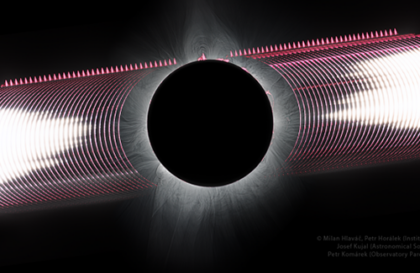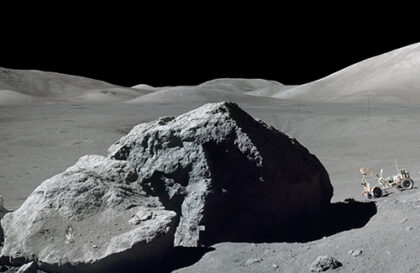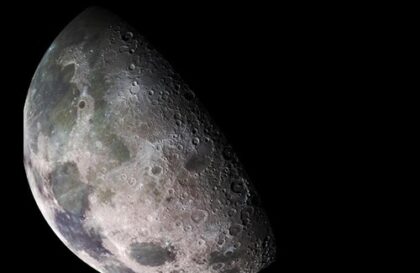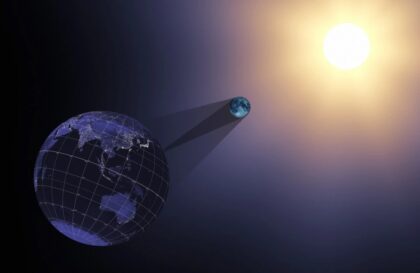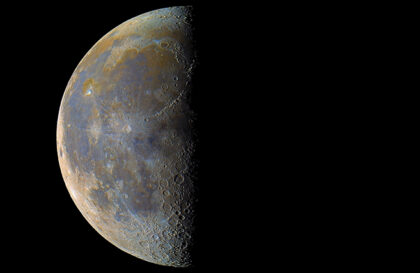The gas layer surrounding the Earth extends up to 630,000 km, which is 50 times the diameter of our planet and significantly further than the orbit of the Moon. This is evidenced by a recent discovery based on ESA/NASA SOHO Solar and Heliospheric Observatory observations.
Observations by the SOHO spacecraft were made 20 years ago. Scientists paid attention to this in 2019.
SOHO. Credit: ESA / Science & Exploration / Space Science
Geocrown of the Earth
Geocrown of the Earth
In 1972, Apollo 16 astronauts placed the first telescope on the Moon, which captured a fantastic image of the geocorona, a glowing cloud of hydrogen atoms surrounding the Earth, in ultraviolet light. At that time, the astronauts on the lunar surface did not realize they were on this geocorona’s edge.
The geocorona is a cloud of hydrogen atoms where our atmosphere passes into outer space. One of the instruments on the spacecraft, SWAN, used its sensitive sensors to track the hydrogen signature and pinpoint the geocorona’s boundaries.
Geocorona from the Moon. Credit: ESA / Science & Exploration / Space Science
These observations could only be made at certain times of the year when the Earth and its geocorona were within SWAN’s field of view.
The power of archives from Lagrange point L1
Illustration of Lagrange point L1. Credit: ISRO
Since its launch in December 1995, the SOHO space observatory has focused on solar exploration for over two decades. It analyzes the Sun from its deep core to its outer corona and solar wind.
SOHO orbits the first Lagrange point L1, approximately 1.5 million kilometers from Earth, pointing toward the Sun.
This position is ideal for observing the geocorona from the outside. The SOHO SWAN instrument took three photographs of the Earth and its extended atmosphere between 1996 and 1998.
A team of researchers led by Jean-Lou (former SWAN Principal Investigator) and Igor Balyukin from the Russian Space Research Institute decided to extract this unique data set from the archives for further analysis. These amazing SOHO images of the entire geocorona are now expanding our understanding of Earth’s atmosphere.
Hydrogen cloud
The sun interacts with hydrogen atoms through ultraviolet light of a specific wavelength, known as Lyman alpha. This light can be either absorbed or emitted by atoms, but due to absorption by the Earth’s atmosphere, it can only be observed from space.
Thanks to a special hydrogen absorption cell, the SWAN instrument can measure Lyman-alpha light from the geocorona.
Recent research has revealed that solar radiation compresses hydrogen atoms in the geocorona on the day side of the Earth and creates a region of increased density on the night side. However, the daytime region remains sparse, containing 70 atoms per cubic centimeter at 60,000 kilometers above the Earth’s surface and about 0.2 the distance from the Moon.
The relatively low concentration of hydrogen is on the verge of a vacuum; therefore, this additional hydrogen source does not significantly impact space exploration. It is important to note that these particles do not pose a risk to future space travelers on planned missions to orbit the Moon.
Ultraviolet radiation associated with the geocorona causes hydrogen atoms to scatter sunlight in all directions. However, its exposure to astronauts in lunar orbit is negligible compared to the main source of radiation, the Sun.
However, the Earth’s geocorona may obstruct future astronomical observations near the Moon. Space telescopes operating in the ultraviolet to analyze the chemical composition of stars and galaxies must consider this influence.
Planets with hydrogen in their exosphere typically show traces of water vapor closer to their surface, including Earth, Mars, and Venus. This is important when studying planets outside our solar system, where potential water sources can be found.
Banner image: Photographed by Expedition 10 Commander Leroy Chiao on the International Space Station. (Image credit: NASA)
Image credit:
https://www.space.com
https://www.esa.int
https://www.esa.int
https://www.hindustantimes.com

